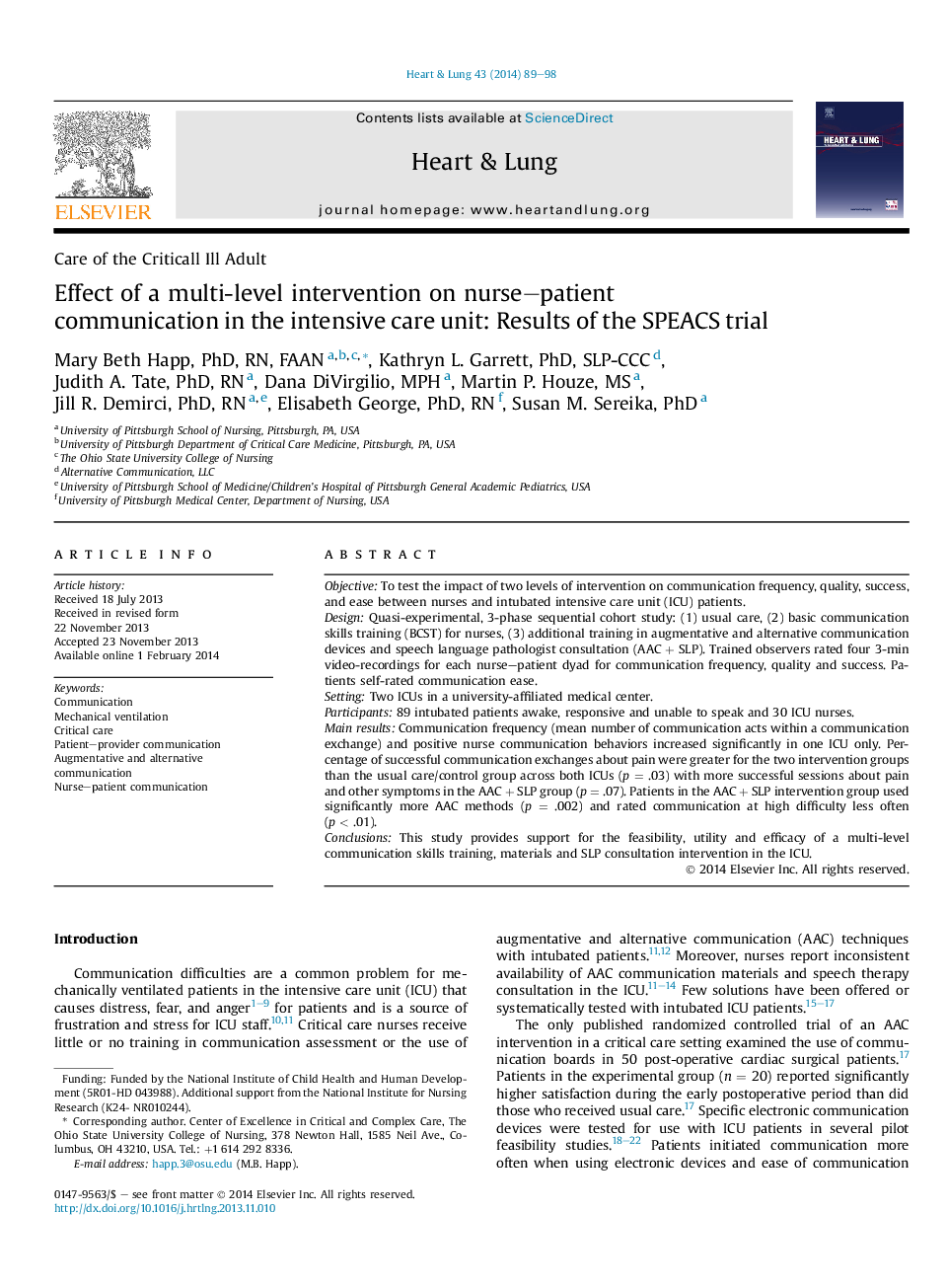| Article ID | Journal | Published Year | Pages | File Type |
|---|---|---|---|---|
| 2651782 | Heart & Lung: The Journal of Acute and Critical Care | 2014 | 10 Pages |
ObjectiveTo test the impact of two levels of intervention on communication frequency, quality, success, and ease between nurses and intubated intensive care unit (ICU) patients.DesignQuasi-experimental, 3-phase sequential cohort study: (1) usual care, (2) basic communication skills training (BCST) for nurses, (3) additional training in augmentative and alternative communication devices and speech language pathologist consultation (AAC + SLP). Trained observers rated four 3-min video-recordings for each nurse–patient dyad for communication frequency, quality and success. Patients self-rated communication ease.SettingTwo ICUs in a university-affiliated medical center.Participants89 intubated patients awake, responsive and unable to speak and 30 ICU nurses.Main resultsCommunication frequency (mean number of communication acts within a communication exchange) and positive nurse communication behaviors increased significantly in one ICU only. Percentage of successful communication exchanges about pain were greater for the two intervention groups than the usual care/control group across both ICUs (p = .03) with more successful sessions about pain and other symptoms in the AAC + SLP group (p = .07). Patients in the AAC + SLP intervention group used significantly more AAC methods (p = .002) and rated communication at high difficulty less often (p < .01).ConclusionsThis study provides support for the feasibility, utility and efficacy of a multi-level communication skills training, materials and SLP consultation intervention in the ICU.
